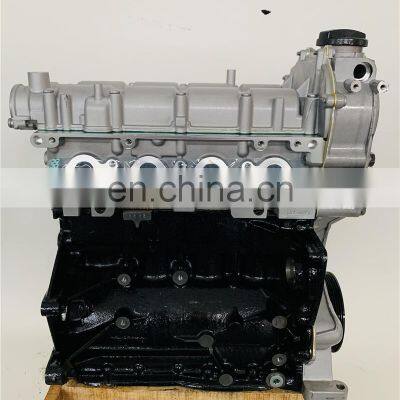Increase fuel efficiency with a top-tier clp engine.
Increase fuel efficiency with a top-tier clp engine.
Blog Article
Exactly How a Clp Engine Can Boost Effectiveness in Various Industries
The advent of CLP engines notes a substantial shift in operational efficiency across various sectors, driven by their capability to optimize fuel intake and minimize downtime. Industries such as manufacturing and logistics stand to obtain substantially from their robust layout and constant power result, which promise to enhance procedures and boost efficiency. As organizations significantly prioritize sustainability together with performance, the function of CLP engines becomes also a lot more crucial. What remains to be seen is how these innovations will shape the future landscape of commercial procedures and their effect on wider financial fads (clp engine).
Overview of CLP Engines
CLP engines, or Continuous Fluid Propellant engines, stand for a substantial innovation in propulsion modern technology, especially for area applications. These engines utilize a continuous feed system that permits for the continual expulsion of propellant, resulting in enhanced performance and efficiency compared to typical strong or hybrid propulsion systems. By preserving a constant circulation of liquid propellant, CLP engines can attain a lot more accurate drive control, which is vital for navigating spacecraft in various goal situations.
The design of CLP engines incorporates sophisticated materials and cutting-edge fuel monitoring systems. clp engine. This leads to decreased weight and raised dependability, vital factors for long-duration room missions. In addition, the constant procedure lessens the risk of burning instability, a typical obstacle in standard rocket engines.

Benefits in Manufacturing
The manufacturing of Constant Fluid Propellant (CLP) engines offers several notable benefits that improve both efficiency and cost-effectiveness. One of the main benefits is the streamlined production process, which decreases the complexity connected with typical propulsion systems. By making use of liquid propellant, manufacturers can accomplish greater precision in engine efficiency, leading to optimized power result and reduced waste.
Additionally, CLP engines promote a greater level of modularity, enabling less complicated combination right into different manufacturing lines. This versatility can dramatically decrease preparations and improve overall functional versatility. The use of CLP modern technology additionally often tends to lessen the need for considerable upkeep due to less moving components, which converts right into decreased downtime and operational expenses.

Applications in Logistics
Leveraging Continuous Liquid Propellant (CLP) engines in logistics provides considerable benefits in functional effectiveness and integrity. These engines give a durable remedy for Our site numerous transport demands, making it possible for the smooth movement of goods across large distances. The inherent design of CLP engines allows for consistent power output, which translates right into smoother and more foreseeable transport timetables.
Among the vital applications of CLP engines in logistics is in heavy-duty products transportation, where they can drive both ground and aerial cars. Their ability to keep high efficiency under varying load problems makes certain that distribution timelines are satisfied, thus enhancing consumer contentment. Furthermore, CLP engines can be integrated right into automated logistics systems, promoting real-time monitoring and optimizing route preparation.
Additionally, the toughness of CLP engines minimizes maintenance downtime, permitting logistics business to maximize their functional capacities. This is especially beneficial in warehousing procedures, where effectiveness in handling and moving products is crucial. As logistics continues to progress, the integration of CLP engines stands for a forward-thinking approach that not just improves efficiency but additionally supports the sector's growing needs for integrity and speed.
Influence On Power Efficiency
Exactly How do Continuous Liquid Propellant (CLP) engines boost energy performance in transportation? CLP engines make use of a regular flow of fluid fuel, maximizing combustion processes and keeping a steady drive output. This layout decreases energy losses related to conventional combustion engines, where fuel distribution can vary and result in ineffectiveness.
The continuous procedure of CLP engines allows for an extra efficient thermal cycle, causing higher certain impulse contrasted to conventional engines. clp engine. This converts to lowered gas consumption for the same quantity of job done, significantly reducing operational expenses throughout various transportation markets, consisting of aeronautics and maritime industries
Additionally, the ability of CLP engines to preserve optimum performance under varying lots problems lowers the requirement for frequent acceleration and slowdown, further improving gas efficiency. Boosted energy effectiveness not only contributes to cost financial savings however additionally results in reduce greenhouse gas emissions, straightening with global sustainability goals.
Future Trends and Innovations
Emerging improvements in Constant Liquid Propellant (CLP) engine modern technology promise to change the landscape of description transportation performance and sustainability. As sectors pivot towards greener alternatives, CLP engines stand at the center, incorporating ingenious materials and design methodologies that enhance efficiency while lessening environmental impact.
Among one of the most appealing trends is the fostering of hybrid systems that combine CLP engines with eco-friendly power sources. This synergy can maximize fuel consumption and lower discharges, aligning with international sustainability objectives. Furthermore, developments in computational liquid characteristics (CFD) are helping with the design of even more aerodynamically effective engines, leading to lowered drag and enhanced fuel performance.
In addition, the advancement of smart tracking systems try this website is set to boost operational performances. These systems take advantage of data analytics and IoT innovation to optimize engine efficiency in real-time, ensuring that the engines run within their most efficient criteria.
As research proceeds to explore different propellant formulations-- such as biofuels and synthetic gas-- the future of CLP engines looks promising. By using these developments, industries can not only enhance their efficiency yet likewise add significantly to a cleaner, much more lasting future in transportation.
Conclusion
In final thought, CLP engines stand for a considerable innovation in efficiency throughout numerous industries. Their capability to maximize fuel intake and lower operational expenses, incorporated with a continuous feed system, improves power output and operational dependability. The combination of innovative materials and less relocating components decreases maintenance requirements, while positioning with sustainability objectives placements CLP engines as an essential technology for the future. Continued technology in this field assures additional renovations in performance and environmental efficiency.
Report this page